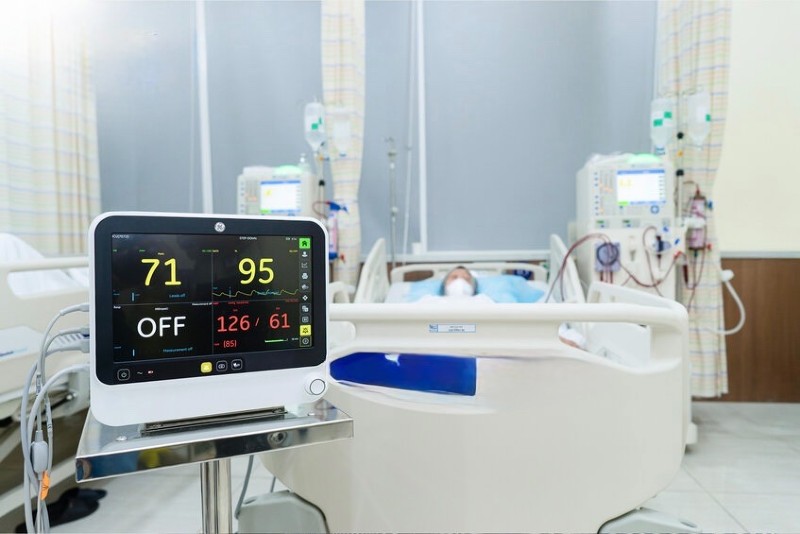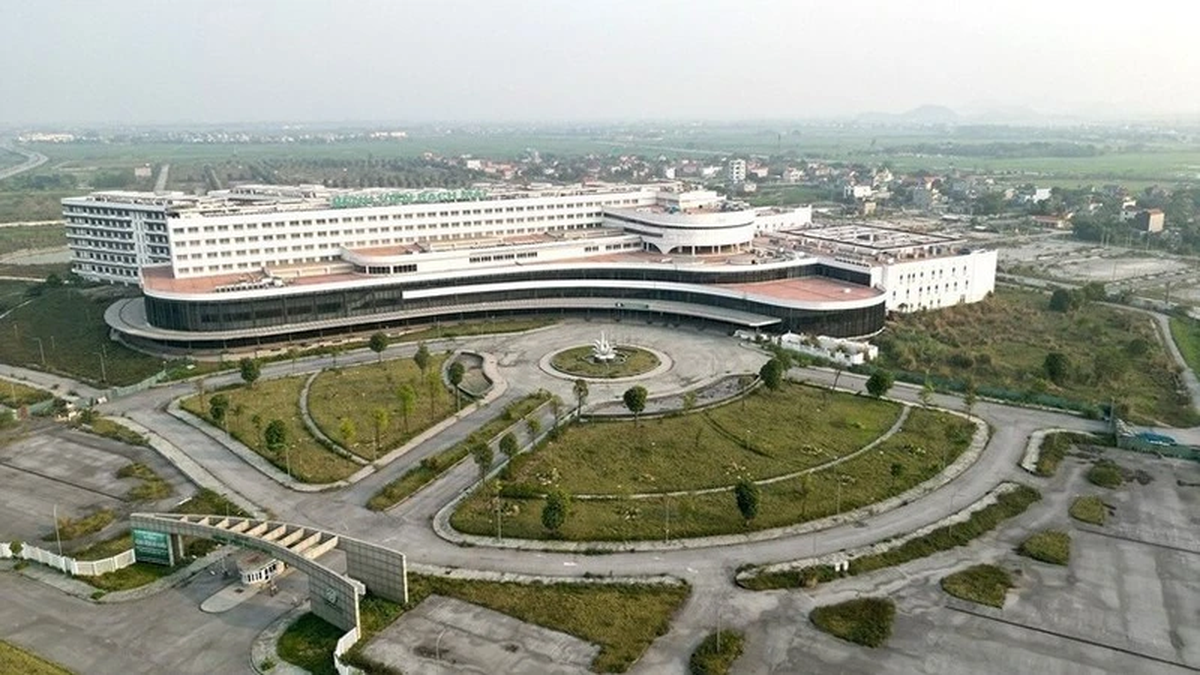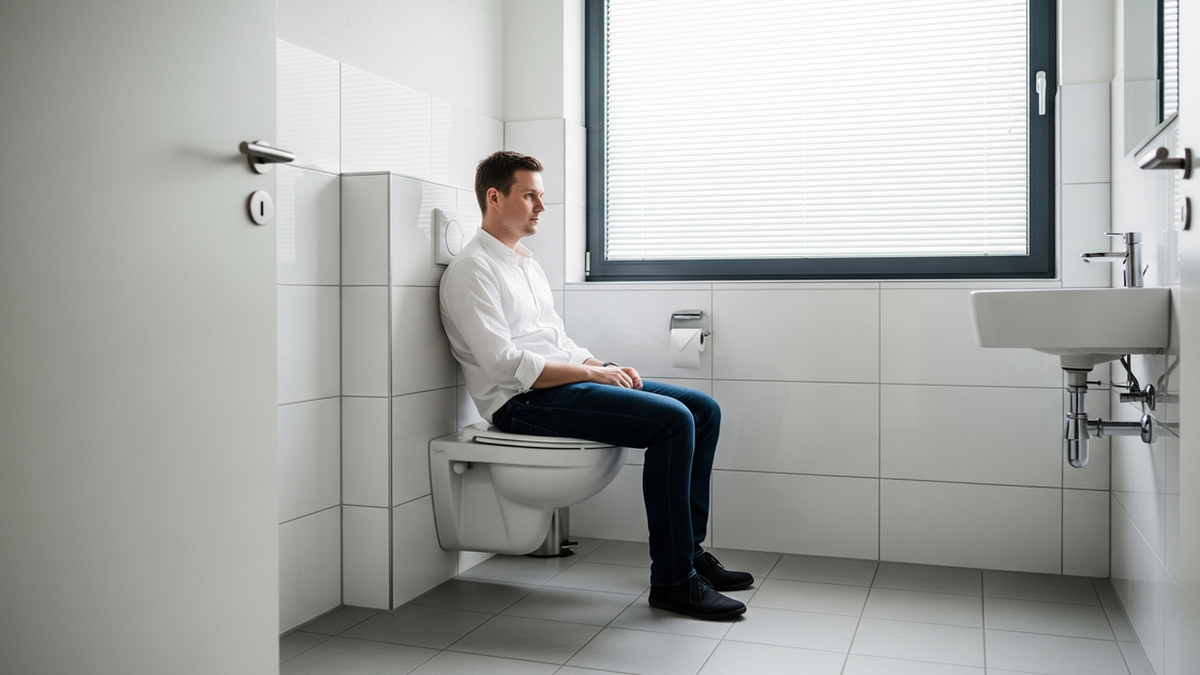Main causes of kidney failure
Mr. L., 53 years old, started regular dialysis after a stroke half a year ago and was diagnosed with end-stage chronic kidney failure. During more than a month of treatment at a hospital near his home, his life seemed to be tied to the dialysis machine.
One of the main reasons for the increasing rate of kidney disease, especially in young people, is an unhealthy lifestyle such as eating salty foods, eating fast food, staying up late, lack of exercise, and abusing alcohol and tobacco. |
However, when he came to the hospital to register for further treatment, doctors discovered that Mr. L. was still able to urinate, a sign that his kidneys had not completely lost function. This was a rare opportunity to help patients escape lifelong dependence on dialysis.
According to Dr. CKI Do Thi Hang, Head of the Nephrology-Dialysis Unit, who is treating Mr. L., if there is still a glimmer of hope, the team of doctors is ready to fight with the patient to delay or even completely eliminate the need for dialysis, because once the patient enters the dialysis cycle, their life will be tied to the hospital and the financial burden is not small.
Mr. L.'s case is quite complicated with a series of underlying diseases such as prolonged hypertension, type 2 diabetes, dyslipidemia, increased uric acid, ischemic heart disease... These are all high-risk factors that cause further damage to the kidneys.
Faced with this situation, doctors have developed an individualized treatment regimen, combining the use of drugs to control blood sugar, blood pressure, blood lipids, anticoagulants and cardiovascular protection measures.
The treatment goal is to control blood pressure below 140/90 mmHg, HbA1c below 7% and LDL-C below 1.8 mmol/L, the optimal thresholds to prevent complications, especially a second stroke, which can require immediate dialysis.
In addition to medical treatment, Mr. L. also strictly follows a reasonable diet: eating less protein, limiting salt, fish sauce, soy sauce, greasy foods, animal organs and red meat. He absolutely does not use painkillers indiscriminately, does not drink alcohol, does not smoke and completely avoids functional foods of unknown origin.
After 3 months of treatment and strict adherence to the regimen, Mr. L's eGFR increased from 24 to 31 mL/min/1.73m², meaning that his end-stage chronic kidney failure had progressed to level 3, enough to not need continued dialysis.
This is a great success in the treatment of chronic kidney disease, when patients are freed from the condition of having to be attached to machines for life.
According to Dr. Hang, Mr. L. suffered from acute kidney failure on top of chronic kidney failure after a stroke, but was fortunately treated promptly during the "golden period" when his kidneys still had some function.
Close coordination between doctors and patients has helped improve kidney function significantly, providing the opportunity to live a healthy life without dialysis.
Sharing about his treatment journey, Mr. L. said that before he got sick, he was a freelancer and often worked with foreign partners, so he ate irregularly, often ate fast food, stayed up late, partied, drank alcohol and smoked.
After the stroke and especially when the doctor advised him that he could avoid dialysis if he followed the treatment, he was determined to completely change his lifestyle. He stopped drinking and smoking, ate scientifically and strictly followed the doctor's instructions, thanks to which his health improved significantly and his kidney function improved day by day.
Currently, in Vietnam, there are more than 10 million people with chronic kidney disease, equivalent to about 12.8% of the adult population. Each year, there are about 8,000 new cases.
According to Dr. Hang, one of the main reasons for the increasing rate of kidney disease, especially in young people, is an unhealthy lifestyle such as eating salty foods, eating fast food, staying up late, lack of exercise, and abusing alcohol and tobacco.
Doctors recommend that people need to change their lifestyle from today, eat in moderation, increase green vegetables and fruits, reduce salt, quit alcohol and tobacco, get enough sleep, reduce stress, and should have regular health check-ups every 6-12 months to detect early signs of kidney damage and treat promptly.
Signs of gallbladder disease that cannot be ignored
Mr. Th., 40 years old, was admitted to the emergency room at Tam Anh General Hospital in Ho Chi Minh City with severe abdominal pain in the epigastric region, accompanied by vomiting and chills all over the body.
Abdominal ultrasound results revealed two large gallstones in the gallbladder, one 2.5 cm and one nearly 1 cm, along with bile sludge and cholesterol plaques adhering to the gallbladder wall.
Doctors determined that the large stone had blocked the bile duct, blocking the bile flow, increasing pressure in the gallbladder. This was the cause of the acute biliary colic that the patient was experiencing.
Dr. Pham Cong Khanh, Head of the Hepatobiliary - Pancreatic Department, Endoscopy and Endoscopic Surgery Center, Tam Anh General Hospital, Ho Chi Minh City, said that stones larger than 2 cm in size are rare and have a high risk of causing dangerous complications, including gallbladder cancer if left untreated for a long time.
In addition, in a few cases, large stones can cause intestinal obstruction if they move into the digestive tract, causing blockage in the small intestine. In Mr. Th.'s case, doctors prescribed immediate laparoscopic cholecystectomy to resolve the obstruction and prevent serious complications.
The surgery was performed using a modern 3D/4K endoscopy system. The doctor dissected the liver and gallbladder triangle, clamped and cauterized the cystic artery, cut the cystic duct, and separated the gallbladder from the liver.
The gallbladder was removed along with two yellow stones, one measuring 25mm and the other 8mm. After the surgery, Mr. Thanh recovered quickly, was able to eat lightly and walk after a day, and was safely discharged after two days of treatment.
Before being hospitalized, Mr. Thanh had experienced a dull pain above his navel for a long time, but he thought it was a stomach ache, so he bought medicine without going to the doctor. It was not until the pain became severe and unbearable that his family took him to the emergency room.
According to Dr. Pham Cong Khanh, gallstones are a fairly common disease, affecting about 8-10% of the population, especially in people with a sedentary lifestyle, eating a lot of saturated fat, being overweight, obese or losing weight too quickly.
Gallstones form due to an imbalance in the composition of bile, especially excess cholesterol or bilirubin. Mr. Th.'s gallstones are cholesterol gallstones, the most common type of gallstone, which form when cholesterol in bile is not fully dissolved, leading to precipitation.
The danger is that the process of gallstone formation often occurs silently, without obvious symptoms. Many cases are discovered by chance through ultrasound during general health check-ups, pregnancy ultrasound or other imaging techniques such as CT or MRI.
If gallstones do not cause symptoms, the patient may be advised to be monitored periodically. However, if the stones cause symptoms, block the flow of bile, or are at high risk such as small stones 3-5mm in size that can easily fall into the bile duct, gallbladder surgery is necessary.
To prevent the risk of gallstones, Dr. Khanh recommends maintaining a healthy lifestyle by eating lots of green vegetables, fruits, whole grains, supplementing unsaturated fats from fish oil or vegetable oil, limiting foods high in saturated fat and fast food, and exercising at least 30 minutes a day.
Absolutely avoid rapid weight loss methods, fasting or unbalanced diets. In addition, regular health check-ups play an important role in early detection and timely treatment of gallbladder diseases, especially for those at high risk.
How dangerous is neonatal hepatitis?
Baby An, 6 weeks old, was taken to the hospital by her family due to prolonged jaundice after birth. Previously, the doctor at a medical facility diagnosed the baby with physiological jaundice. However, the baby's skin color became darker and darker, causing the family to worry and take her to the hospital for a re-examination.
Here, the baby was ordered a blood test by Dr. Phan Thi Tuong Van, who directly treated the baby. The results showed that the direct bilirubin index, which represents the amount of bile in the blood, had increased to 40% (while the normal level is below 20%), indicating that the baby was suffering from jaundice due to cholestasis, not simply physiological jaundice.
Immediately, the doctor ordered an ultrasound to rule out biliary atresia, the most serious and common surgical cause of cholestasis in newborns. This is a condition in which the extrahepatic bile ducts are narrowed and blocked. If not operated on promptly during the “golden time” (before 6-8 weeks of age), it can lead to cirrhosis and the need for a liver transplant in the future.
To accurately determine the cause, the doctor prescribed a trial medication for An for a week. During this time, the family closely monitored and recorded the baby’s skin color, urine, and stool daily, as instructed.
After a week, when re-examined on July 11, the doctor noted that the baby responded well to the medication, with a clear reduction in jaundice and a significant reduction in liver enzymes and bilirubin. The baby was diagnosed with neonatal hepatitis, caused by a virus or infection that reduces the liver's ability to secrete bile, causing cholestasis.
The baby continued to receive medical treatment to restore liver function and prevent complications. However, Dr. Van emphasized that close monitoring for a long period of 6 to 12 months is needed because the disease is at risk of recurrence or worsening if bilirubin levels increase again.
Neonatal hepatitis is just one of many causes of cholestatic jaundice in infants. Failure to respond to medical treatment may be associated with inherited metabolic disorders such as galactosemia, Alagille syndrome, and ARC syndrome.
According to doctors, these are rare but dangerous diseases, often accompanied by many systemic symptoms and requiring in-depth testing and complex treatment with the goal of controlling symptoms and prolonging life.
Mechanistically, cholestatic jaundice occurs when the flow of bile from the liver to the intestines is obstructed. Normally, after red blood cells are broken down, indirect bilirubin is produced, the liver is responsible for converting it into direct bilirubin, then sending it into the bile to be excreted through the intestines.
If the bile flow is obstructed, direct bilirubin cannot leave the liver and is absorbed back into the blood, causing the baby's skin and eyes to turn dark yellow. Because the initial symptoms are similar to physiological jaundice, many parents are easily subjective, causing diagnosis and treatment to be delayed, losing the "golden time" for effective treatment.
In addition to jaundice and yellow eyes, children with cholestasis may also have pale stools (grayish-white, like clay), dark urine like dark beer, accompanied by itching, a large abdomen, an enlarged liver, slow weight gain, and malnutrition. If not detected and treated promptly, prolonged cholestasis will cause irreversible liver damage, leading to cirrhosis, liver failure, and even death.
In addition, because bile plays an important role in the absorption of fats and fat-soluble vitamins, children with cholestasis often suffer from severe malnutrition.
Doctor Van recommends that if a baby shows signs of jaundice lasting more than 4 weeks after birth (for babies who drink formula) or 6 weeks (for babies who are exclusively breastfed), even if the baby is still eating and drinking well, this is an abnormal sign and the baby should be taken to a specialist immediately.
Timely intervention can help accurately diagnose the cause, provide proper treatment, and protect the child's liver from the very first days of life.
Source: https://baodautu.vn/tin-moi-y-te-ngay-147-thay-doi-loi-song-de-giam-ty-le-mac-suy-than-d329874.html
























![[Photo] National Assembly Chairman Tran Thanh Man visits Vietnamese Heroic Mother Ta Thi Tran](https://vphoto.vietnam.vn/thumb/1200x675/vietnam/resource/IMAGE/2025/7/20/765c0bd057dd44ad83ab89fe0255b783)














































































Comment (0)